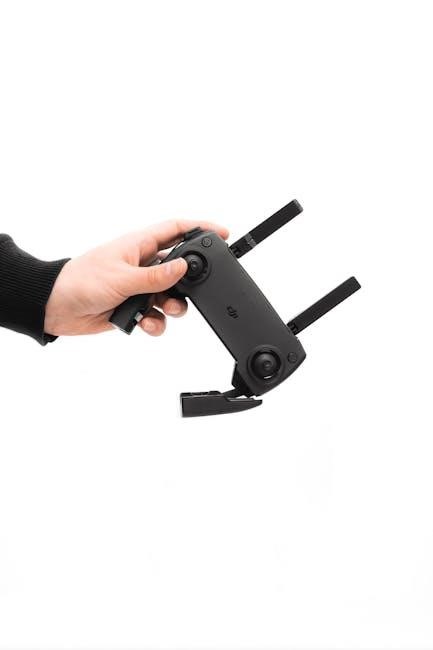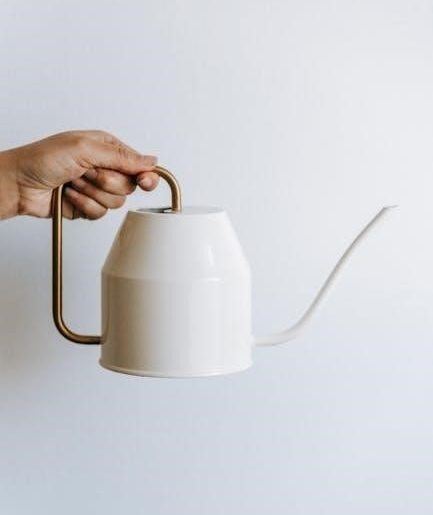Lasko Portable Heater Manual: A Comprehensive Guide
Navigating warmth solutions requires understanding your Lasko heater; this guide details operation, safety, maintenance, and troubleshooting for optimal performance and cozy comfort.
Understanding Your Lasko Heater Model
Identifying your specific Lasko portable heater model is the crucial first step. Lasko offers a diverse range, including ceramic heaters, tower heaters, and space heaters designed for various room sizes and heating needs. Locate the model number – typically found on a sticker on the bottom or back of the unit – and retain it for future reference.
This number is essential when accessing specific documentation, ordering replacement parts, or contacting customer support. Different models feature unique controls, settings (like high/low heat, fan-only modes), and safety features. Knowing your model allows you to fully utilize its capabilities and understand its specific operational characteristics. Referencing the model number ensures you’re accessing the correct information for your particular heater.
Safety Precautions & Warnings
Prioritizing safety is paramount when operating your Lasko portable heater. Always plug the heater directly into a wall outlet – avoid extension cords or power strips. Maintain a safe distance of at least three feet from flammable materials like curtains, furniture, and bedding. Never leave the heater unattended while in operation, especially around children or pets.
Inspect the power cord regularly for damage; discontinue use if frayed or damaged. Do not operate the heater in wet or damp environments, such as bathrooms. Ensure the heater is placed on a stable, level surface to prevent tipping. Disconnect the heater when not in use and before cleaning. Ignoring these warnings could result in fire, electric shock, or injury.
Key Features & Components
Your Lasko portable heater boasts several features designed for efficient and comfortable heating. Core components include a robust heating element – often ceramic – responsible for generating warmth. A fan distributes the heated air throughout the room, ensuring even temperature distribution. Many models feature adjustable thermostat controls, allowing you to customize your desired heat level.
Additional features may include multiple heat settings (high, low, and fan-only), a digital display for precise temperature monitoring, and a remote control for convenient operation. Some units incorporate safety features like overheat protection and tip-over switches. Familiarizing yourself with these components will enhance your heating experience and ensure safe operation.
Initial Setup & Operation
Before first use, carefully unpack your Lasko portable heater and inspect it for any damage. Place the heater on a stable, level surface, ensuring ample space around it – at least three feet – away from walls, furniture, and flammable materials. Avoid placing it on thick carpeting or near curtains.
Plug the heater directly into a grounded 120V AC outlet; avoid using extension cords or power strips. Ensure the power switch is in the “off” position before plugging it in. Once connected, you’re ready to begin operation, selecting your desired settings as outlined in the following sections. Always prioritize safety during setup and initial use.
Powering On & Off
To activate your Lasko heater, locate the power button – typically found on the control panel or the heater’s body. Press the button firmly to initiate the heating process. A light indicator will usually illuminate, confirming the heater is operational. To deactivate, simply press the power button again.
Some models feature a multi-function power switch, combining on/off with heat setting selection. Always ensure the heater is completely switched off before unplugging it from the power outlet. Never disconnect the heater by pulling on the cord; grasp the plug itself. Proper powering on and off ensures safe and efficient operation.
Temperature Control Settings
Lasko heaters often provide adjustable temperature control, allowing you to customize your comfort level. Many models feature a dial or digital controls to select your desired heat output. Rotating the dial clockwise generally increases the temperature, while counterclockwise decreases it. Digital displays show the set temperature precisely.
Some heaters include a “comfort control” or “auto” setting, which automatically adjusts heat output to maintain a consistent room temperature. Experiment with different settings to find your ideal warmth. Remember to start with a lower setting and gradually increase it as needed for optimal energy efficiency and comfort.
Heating Modes Explained
Lasko portable heaters commonly offer multiple heating modes to suit various needs; Understanding these modes maximizes efficiency and comfort. The most frequent options include High Heat, Low Heat, and a Fan-Only mode. High Heat delivers maximum warmth, ideal for quickly heating a cold room, but consumes more energy.
Low Heat provides a gentler warmth, suitable for maintaining a comfortable temperature without excessive energy use. The Fan-Only mode circulates air without producing heat, offering cooling relief or aiding in distributing warmth from other sources. Selecting the appropriate mode ensures optimal performance and energy savings.
High Heat Setting
The High Heat setting on your Lasko portable heater is designed for rapid room warming. This mode utilizes the heater’s maximum power output to quickly elevate the temperature in a given space. It’s best suited for initially heating a cold room or for situations requiring immediate warmth.
However, due to its higher energy consumption, prolonged use of the High Heat setting isn’t recommended for maintaining a consistent temperature. Always ensure adequate ventilation when using this mode and never leave the heater unattended. Monitor the heater’s operation and be mindful of potential overheating.
Low Heat Setting
The Low Heat setting provides a gentler, more energy-efficient warming experience with your Lasko heater. This mode operates at a reduced power level, delivering a consistent and comfortable heat output without rapidly increasing room temperature. It’s ideal for maintaining warmth over extended periods, preventing excessive heat buildup, and conserving energy.
Using the Low Heat setting is particularly beneficial in smaller rooms or when a less intense heat is desired. It’s also a safer option for prolonged use, minimizing the risk of overheating. Regularly check the heater to ensure optimal performance and maintain a comfortable environment.
Fan-Only Mode
Your Lasko portable heater features a Fan-Only mode, offering cooling circulation without any heat emission. This function utilizes the heater’s fan to distribute air throughout the room, providing a refreshing breeze during warmer weather or simply for air circulation. It’s a versatile option beyond heating, promoting airflow and preventing stuffiness.
Activating Fan-Only mode is simple – typically, a dedicated button or setting on the control panel initiates this function. It’s an energy-efficient way to maintain air movement without adding heat, making it suitable for year-round use. Ensure the heater is on a stable surface when operating in Fan-Only mode.
Maintenance & Cleaning
Regular maintenance ensures your Lasko portable heater operates safely and efficiently. Before any cleaning, always disconnect the heater from the power outlet. Dust accumulation can reduce performance and pose a fire hazard, so frequent dusting of the exterior with a soft cloth is crucial. Avoid using water or cleaning solutions directly on the unit.
For models with filters, periodic filter replacement is essential for optimal air quality and heating performance. Refer to your specific model’s instructions for filter type and replacement frequency. Inspect the power cord regularly for damage; do not use if frayed or damaged. Proper care extends the heater’s lifespan.

Dusting & Exterior Cleaning
Maintaining a clean exterior is vital for safe and efficient operation. Before cleaning, always unplug your Lasko heater from the electrical outlet. Use a soft, dry cloth to gently wipe down the heater’s surface, removing dust and debris. Avoid abrasive cleaners, solvents, or scouring pads, as these can damage the finish.
Pay particular attention to ventilation openings, ensuring they are free from obstructions. Dust buildup can restrict airflow and cause the heater to overheat. For stubborn dirt, lightly dampen the cloth with water, but ensure it’s wrung out thoroughly to prevent moisture from entering the unit. Regular dusting prolongs the heater’s life.
Filter Replacement (If Applicable)
Certain Lasko portable heater models feature air filters requiring periodic replacement. Check your specific model’s documentation to confirm filter presence and type. A clogged filter restricts airflow, diminishing heating efficiency and potentially causing overheating. Replacement frequency depends on usage; typically, every 3-6 months is recommended.
To replace, always unplug the heater. Locate the filter access panel (refer to your manual). Remove the old filter and discard it. Insert a new, compatible Lasko filter, ensuring proper alignment. Secure the access panel. Do not operate the heater without a filter installed, or with a damaged filter. Regular filter changes ensure optimal performance and air quality.
Troubleshooting Common Issues
Encountering problems with your Lasko heater? This section addresses frequent concerns. If the heater fails to power on, verify the power cord is securely plugged into a working outlet and check the circuit breaker. Insufficient heat output often indicates a dirty air filter (if applicable) or obstructions blocking airflow.
If the heater cycles on and off rapidly, the overheat protection may be activating – ensure adequate space around the unit and avoid covering it. Never attempt to disassemble or repair the heater yourself; contact customer support. Always unplug the unit before inspecting or troubleshooting. Refer to the full manual for detailed diagnostics.

Heater Won’t Turn On
If your Lasko heater isn’t responding, begin with the simplest checks. First, confirm the power cord is firmly connected to a functioning electrical outlet. Test the outlet with another device to rule out a power supply issue. Next, inspect the circuit breaker or fuse box; a tripped breaker or blown fuse will prevent operation.
Ensure the heater’s power switch is in the “On” position. Some models feature a reset button – locate and press it if present. Do not use an extension cord unless absolutely necessary, and if so, ensure it’s heavy-duty and rated for the heater’s wattage. If problems persist, consult the full manual or contact Lasko support.

Heater Not Producing Enough Heat
If your Lasko heater is running but isn’t providing sufficient warmth, several factors could be at play. Verify the thermostat setting is appropriately high for your desired temperature. Ensure the heater isn’t positioned too close to walls or furniture, which can obstruct airflow and reduce efficiency.
Check the air intake and output vents for any obstructions like dust or debris. A clogged filter (if applicable) significantly restricts airflow. Confirm you’ve selected the desired heat setting – High or Low – and that it aligns with your needs. If the room is exceptionally large, the heater may struggle to heat it effectively.

Overheat Protection Activation
Your Lasko heater is equipped with overheat protection, a crucial safety feature that automatically shuts off the unit if it becomes excessively hot. This prevents potential fire hazards. If the heater cycles on and off frequently, or won’t stay on at all, overheat protection may have been triggered.

Common causes include blocked air vents, restricted airflow due to nearby objects, or internal component malfunction. Before resetting, ensure the heater is unplugged and has cooled down completely. Clear any obstructions around the unit. If the problem persists after cooling and clearing vents, it may indicate a more serious issue requiring professional attention.
Resetting Your Lasko Heater
If your Lasko heater experiences issues, a simple reset can often resolve the problem. Begin by completely disconnecting the heater from the power outlet. Allow the unit to remain unplugged for a full 60 seconds – this ensures all internal components fully discharge.
After the waiting period, carefully inspect the power cord for any damage. If the cord is damaged, do not attempt to reset or operate the heater. If the cord is intact, plug the heater back into a functioning outlet. Attempt to power on the unit. If it still doesn’t respond, consult the troubleshooting section or contact customer support.
Understanding the Digital Display (If Applicable)
For Lasko heaters equipped with a digital display, understanding its functions enhances usability. The display typically shows the set temperature, current room temperature, and selected heating mode (High, Low, or Fan-Only). Some models feature a digital timer, allowing for programmed operation.
Error codes may appear to indicate specific issues, such as a sensor malfunction or overheat protection activation – refer to the troubleshooting section for code definitions; Brightness adjustments are often available for user preference. The display’s responsiveness confirms proper operation; a blank or flickering display suggests a potential issue requiring attention.
Remote Control Operation (If Applicable)
If your Lasko portable heater includes a remote control, it offers convenient operation from a distance. Typically, the remote mirrors the heater’s on-unit controls, allowing you to power the unit on/off, adjust the temperature, and select heating modes (High, Low, Fan-Only).
Ensure the remote has fresh batteries for optimal performance. Point the remote directly at the heater’s sensor for reliable communication. Some remotes include additional features like timer settings or sleep modes. Keep the remote dry and avoid dropping it to prevent damage. If the remote becomes unresponsive, check the batteries and ensure there are no obstructions.
Energy Saving Tips
Maximize efficiency and minimize energy consumption with these simple tips. Utilize the heater to warm only the occupied room, closing off vents in unused spaces. Lowering the thermostat slightly and supplementing with your Lasko heater can be more cost-effective than heating the entire house.
Take advantage of the fan-only mode for air circulation, reducing the need for heating or cooling. Regularly clean the heater’s filter (if applicable) to ensure optimal airflow. Avoid placing the heater near curtains or furniture that could block airflow. Consider using a programmable thermostat for automated temperature control and energy savings.

Warranty Information & Registration
Your Lasko portable heater is backed by a manufacturer’s warranty against defects in materials and workmanship. The standard warranty period is typically one year from the date of original purchase, though extended warranties may be available. Proof of purchase is required for all warranty claims.
To register your heater and activate your warranty, visit the official Lasko website and complete the online registration form. Registration allows Lasko to notify you of important safety updates and product recalls. Warranty coverage does not extend to damage caused by misuse, abuse, or unauthorized repairs. See the full warranty details included with your product or online.
Frequently Asked Questions (FAQ)
Q: Why does my heater smell when first turned on? A: A slight odor is normal during initial use, as the heating element burns off manufacturing residues. This should dissipate quickly.
Q: Can I use an extension cord with my Lasko heater? A: It’s generally not recommended. If absolutely necessary, use a heavy-duty extension cord rated for the heater’s wattage.
Q: What does the “reset” button do? A: The reset button reactivates the overheat protection system after it has been triggered. Ensure the cause of overheating is addressed before resetting.
Q: How often should I clean the filter? A: Filter cleaning frequency depends on usage, but monthly cleaning is recommended for optimal performance.
Where to Find Additional Support & Resources

For detailed assistance beyond this manual, Lasko offers a comprehensive support network. Visit the official Lasko website at www.laskoproducts.com for access to downloadable manuals, FAQs, and troubleshooting guides specific to your model.

Customer service representatives are available via phone at 1-800-233-0267 during business hours to address individual concerns and provide personalized support.
Explore Lasko’s online knowledge base for helpful articles and videos demonstrating proper usage and maintenance.
Connect with the Lasko community on social media platforms for tips and shared experiences.

Disposal & Recycling Information
Responsible disposal is crucial for environmental protection. Do not dispose of your Lasko portable heater with general household waste. Electronic waste (e-waste) contains valuable materials that can be recovered and reused, reducing landfill burden and conserving resources.
Check with your local municipality for designated e-waste collection sites or recycling programs. Many communities offer convenient drop-off locations or scheduled collection events.
Alternatively, explore manufacturer take-back programs or certified e-waste recyclers.
Properly dismantling the heater should only be performed by qualified professionals to avoid potential hazards.
